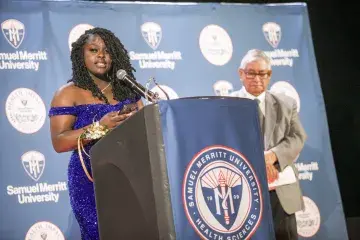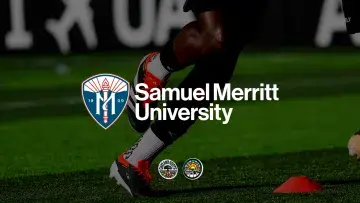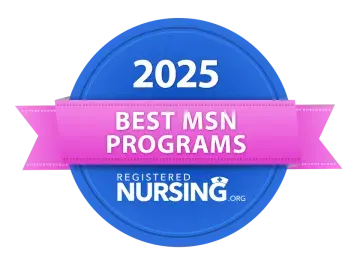SMU Nursing Students Provide Care in Oakland Homeless Encampments
Samuel Merritt University (SMU) alumna Georgina Grimm prefers working in disadvantaged communities so as a nursing student she jumped at the chance to do her clinical training with the most underserved population of all: people living on the streets.
Grimm was the first SMU student to work with the Street Team Outreach Medical Program (STOMP), bringing desperately needed healthcare to Oakland’s homeless encampments in a bus outfitted as a mobile clinic.
Run by the Roots Community Health Center in East Oakland and funded by Alameda County Health Care for the Homeless, STOMP is trying to prevent people from dying on the streets by providing medical treatment in the field and encouraging them to seek primary care at a brick-and-mortar clinic.
As the homeless population in Oakland grows, tent camps of people living under freeway overpasses and in industrial areas are multiplying and becoming the most visible signs of the area’s affordable housing crisis. By some estimates, there are as many as 100 of these shantytowns across the city.
“They’re like refugees in their own communities living under a bridge,” says Grimm.
Since graduating last December, she works a few days a week at the Roots urgent care clinic and volunteers at least one night a week with the street medicine team.
“It’s very rewarding,” she says.
This summer, Grimm was joined on the mobile outreach team by other SMU family nurse practitioner students while two SMU faculty members became clinical instructors for the first time at Roots clinics.
As living conditions deteriorate in the tent camps, the STOMP team hopes to prevent people without shelter from getting sicker and relying on costly emergency room visits.
Grimm says one of the biggest misconceptions about the homeless is that drug overdoses are their major cause of death, when in fact most are dying from the same chronic diseases as people in more affluent communities — diabetes, hypertension, and heart failure — just 15 years earlier.
“It’s not unlike what you see in a clinic in Walnut Creek,” she says. “They’re just not taken care of.”
Grimm says caring for people living on the streets forces students to focus on their patients’ circumstances and what is possible to improve their health in the moment. It’s one thing to drain an abscess, she says, but a bigger hurdle to convince a homeless woman to schedule a mammogram when she is struggling with daily survival and has no transportation.
“Some patients have not been seen by a doctor in 20 years,” she says, recalling one patient who was unaware he was in stage-four heart failure. “When you do primary care in severely underserved communities, you see more advanced conditions.”
When Grimm first started doing medical outreach in homeless camps last year as a nursing student, STOMP would see an average of four patients a night. Now there are nights where they see more than 20 people in two hours.
“It’s about building a relationship over time,” says Grimm.
She credits the patients’ higher level of trust in the mobile healthcare team to STOMP’s partnership with the HIV Education and Prevention Project of Alameda County, which has earned the confidence of Oakland’s homeless residents over the years by providing free HIV and Hepatitis C screenings and distributing clean needles to injection drug users.
Led by a physician carrying medical supplies in a backpack, the STOMP outreach workers tend to ailments and conduct diabetes and blood pressure screenings. They also distribute hygiene kits and hook them up with Medi-Cal and social services.
“Working in the homeless encampments allows students a view of a reality that most healthcare providers never see,” says Rhonda Ramirez, EdD, director of SMU’s Family Nurse Practitioner Program. “Seeing how the homeless live is a very strong reminder that care is not only physical; healthcare providers also must include psycho-social elements in their evaluation of people they care for. I think this is a tremendous lesson.”


